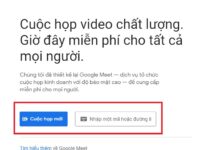In the modern world, consumers’ needs for optimizing living spaces and liberating labor, as well as enhancing enjoyment, are ever-increasing. As a result, numerous smart or aesthetically pleasing products have emerged. However, among those heavily advertised items, some have delivered terrible experiences, falling far short of their promised benefits.
The following are items that have been deemed useless or poorly designed despite their advertised effectiveness.
Intricate Dinnerware Sets
Dinnerware sets with intricate designs or patterns were once considered “hot” items as they appeared trendy and luxurious. However, they quickly fell out of favor due to the vibrant colors fading over time. Items purchased online, with unclear origins, may use low-quality dyes, which, if leached into food, can be harmful to health.
Moreover, intricate or complexly designed dinnerware often poses challenges for cleaning and scrubbing, especially those with numerous crevices or small holes. Inadequate cleaning can lead to bacterial growth and mold formation, posing health risks to users.
Smart Trash Cans: Modern but Troublesome
Manufacturers advertised this type of product as having miraculous features such as self-odor neutralization, automatic bag sealing, and motion-sensor lid opening. Despite incorporating advanced motion sensor technologies, most of these trash cans require frequent battery replacements or charging to maintain the advertised functions.
The use of smart trash cans also demands careful and gentle handling. A single incorrect move can lead to malfunctions. When the sensors act up, disposing of trash and collecting garbage bags become highly inconvenient.
Mini Smart Mop
The mini smart mop was promoted as a tool to clean water splashes on mirrors and sinks without touching the water or using wasteful paper towels. Similar to a regular mop, it conveniently wrings out water using a twist mechanism on the handle.
In reality, this tool isn’t as effective as advertised. Users must apply considerable force to remove water, making it tiring to use. After use, it needs to be thoroughly dried, or it will develop an unpleasant odor or mold. Additionally, when dry, the smart mop’s sponge becomes rigid, requiring soaking before it softens for use.

Items that were useless or performed poorly despite their heavy advertising. (Image: Amazon)
Bean Bag Chairs: Relaxing but Hard to Maintain
Bean bag chairs, with their frameless design, are filled with foam and cotton to envelop the user’s body comfortably in any position, offering a cozy and pleasant experience. However, over time, these chairs tend to flatten and require frequent refilling of foam and cotton, which is inconvenient and costly. Moreover, they easily attract dust and are challenging to clean. Vacuuming is difficult due to the lack of a solid support point.
Additionally, despite their comfort, bean bag chairs are not the best choice for individuals with bone or joint issues. The lack of a rigid frame can lead to back pain and spinal problems.
S-shaped Hangers
Heavily advertised as a space-saving solution for closets, S-shaped hangers were supposed to allow hanging multiple types of clothing, from shirts to towels, on a single hanger. In reality, these hangers are thin and flimsy and can only support extremely light items. Attempting to hang heavy garments like jeans or fluffy coats will cause the hanger to stretch and potentially break.
Avoiding Deceptive Advertising
To avoid being misled by over-the-top TV advertisements and to purchase quality household items that meet your needs, consider the following:
Determine your actual needs and assess whether the product meets your criteria and preferences.
Thoroughly research product information and reviews from those who have used the items.
Opt for products from reputable brands with clear origins and proven track records.
According to VTC News




































